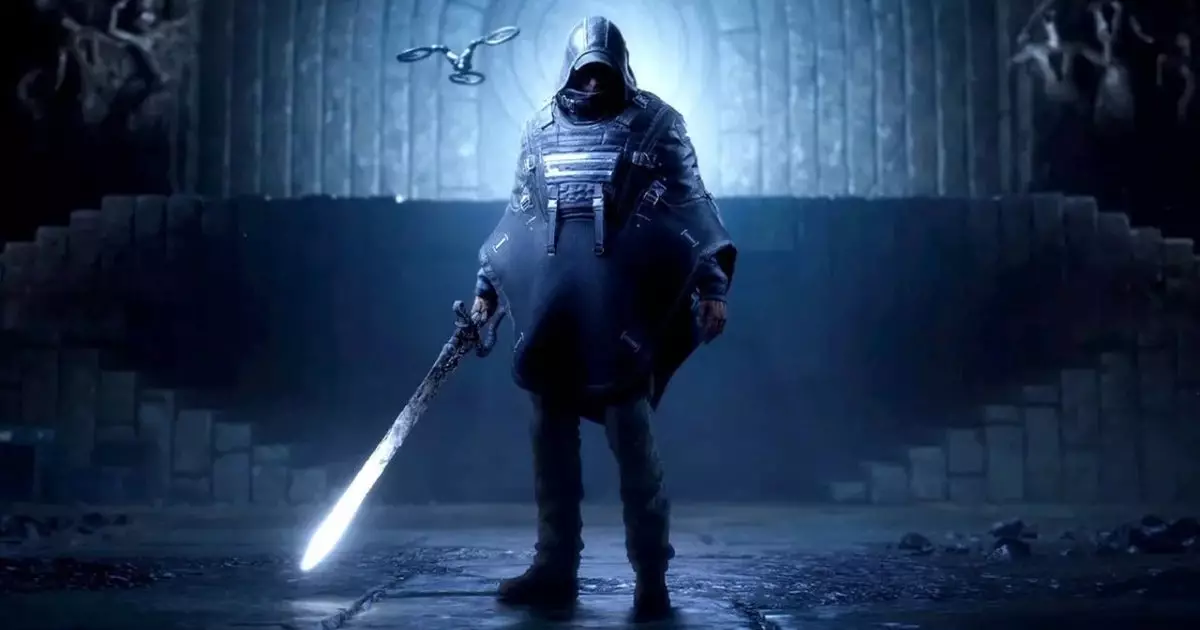When one thinks of video games, the term “arty” might evoke images of serene landscapes and philosophical narratives, but “Hell Is Us” shatters those preconceived notions in a spectacularly chaotic manner. Initially approached with the assumption that it would delve into abstract or intellectual themes, the unveiling trailer flips those expectations on their head, illustrating a universe where emotional turbulence ignites a fervent dance of violence. The evocative voice of Adam Jensen’s actor, Elias Toufexis, ushers viewers into a realm where shock and fury undermine the fragility of reality itself. This theatrical interpretation serves as a benchmark for what one might expect from the game’s narrative.
The genre-defying mash-up that defines “Hell Is Us” includes third-person action, immersive melee combat featuring futuristic weapons reminiscent of lightsabers, and exploration through an arresting blend of sinister military ruins interlaced with supernatural environments. The dichotomy of fighting against both physical and intangible threats creates an engaging web of storytelling and gameplay, effectively keeping players on their toes in a world steeped in peril.
Players assume the role of Rémi, a character shrouded in mystery as he ventures through a war-torn landscape teeming with mythological creatures inspired by ancient artifacts. The challenge lies not only in mastering combat mechanics but also in dissecting the underlying quest for identity that propels Rémi forward. The duality of the game’s world—civil war juxtaposed with supernatural elements—introduces intricate layers of conflict ripe for exploration.
As one immerses in this vivid realm, observations and reflections become vital components of gameplay. The artistry of “Hell Is Us” does not merely lie in its graphics or sound design but rather in how these elements harmonize to craft an evocative narrative experience that challenges conventional gaming paradigms. It beckons players to engage more deeply with their surroundings, culminating in a profound experience amidst the chaos.
Innovative Gameplay Mechanics: The Player-Plattering Concept
Central to the allure of “Hell Is Us” is the intriguing concept of “player-plattering.” This term, both whimsical and perplexing, refers to the game’s innovative approach to navigation and interaction. By eschewing traditional guidance methods, such as mapping tools and linear markers, the developers encourage players to rely on their instincts, promoting a genuine exploration of the game world. Such design philosophy harkens back to the roots of adventure gaming, where curiosity propelled protagonists forward into the unknown.
By fostering an environment where players can engage with the game world in nuanced ways, “Hell Is Us” attempts to carve out a new path in game design—one that emphasizes individual agency over a rigid narrative structure. This ambitious approach raises questions about the nature of exploration and the relationship between players and the worlds they inhabit.
A Star Performance in a Promising Landscape
Elias Toufexis’s return to a lead role is a welcome aspect of “Hell Is Us.” Known for his powerful vocal delivery, Toufexis infuses Rémi with a depth that transcends mere gameplay mechanics. His ability to evoke complex emotions within players enhances the narrative’s fabric, making the experience all the more compelling. However, the pivot from side characters in games like “Starfield” to a main character may confuse his long-time admirers, yet it also showcases the broad range of narrative possibilities in modern gaming.
The amalgamation of various influences—echoes of “Death Stranding,” touches of “Alan Wake,” and nuances from the realm of “Tom Clancy”—creates a unique atmosphere in “Hell Is Us.” The intentional distortion of genre conventions leaves players guessing, ensuring the journey through the game will be anything but predictable.
Set to release on September 4, 2025, anticipation for “Hell Is Us” is building swiftly among gaming communities. As players gear up for a journey into the heart of chaos and creativity, one intriguing question lingers—how will the fusion of art, narrative, and innovative gameplay redefine the expectations of modern gaming? Until that date arrives, gamers can only speculate, but the foundation laid in the trailer and developer insights hints at an experience that promises to be thrillingly memorable.
“Hell Is Us” challenges us to rethink not only how we play, but also why we engage with the storytelling capacity within games. It holds the promise of a transformative experience, one where chaos meets artistry in an explosion of narrative and gameplay potential.


Leave a Reply